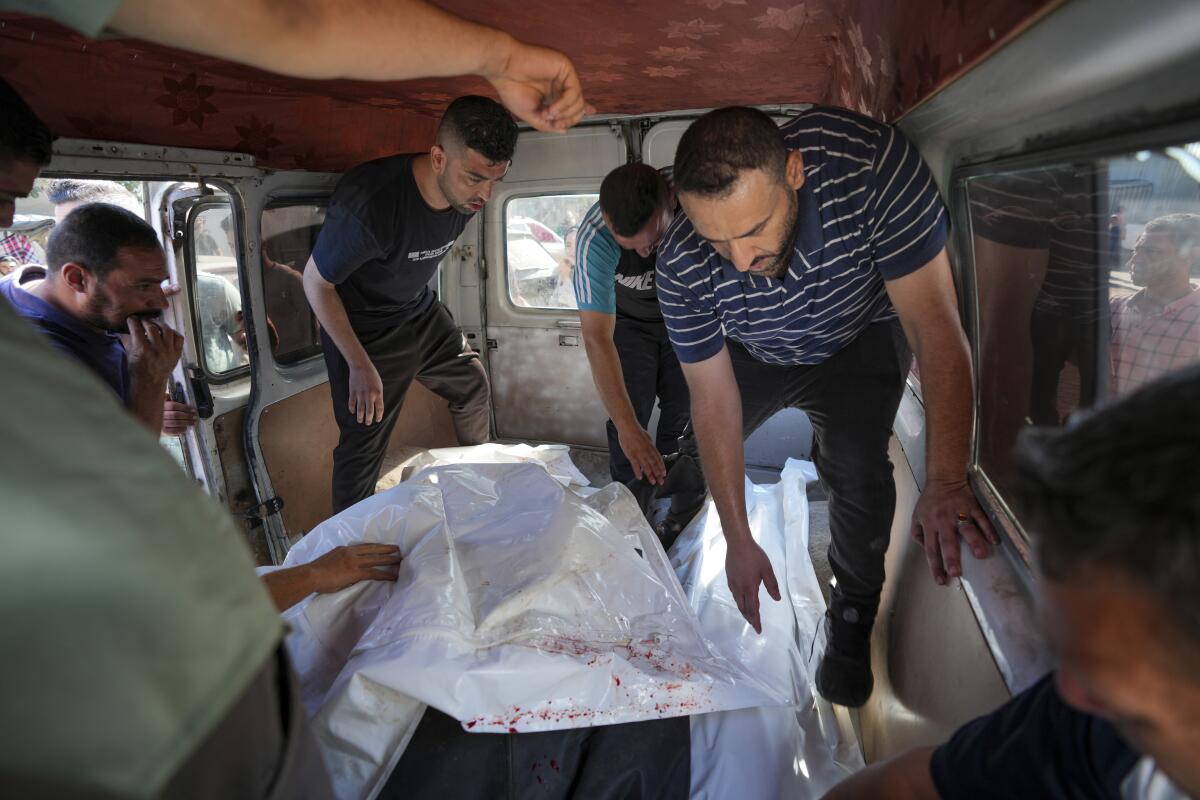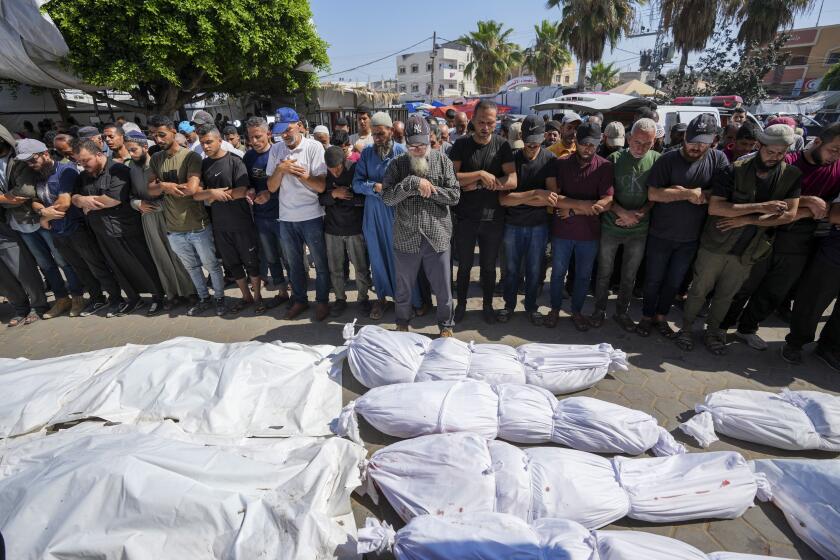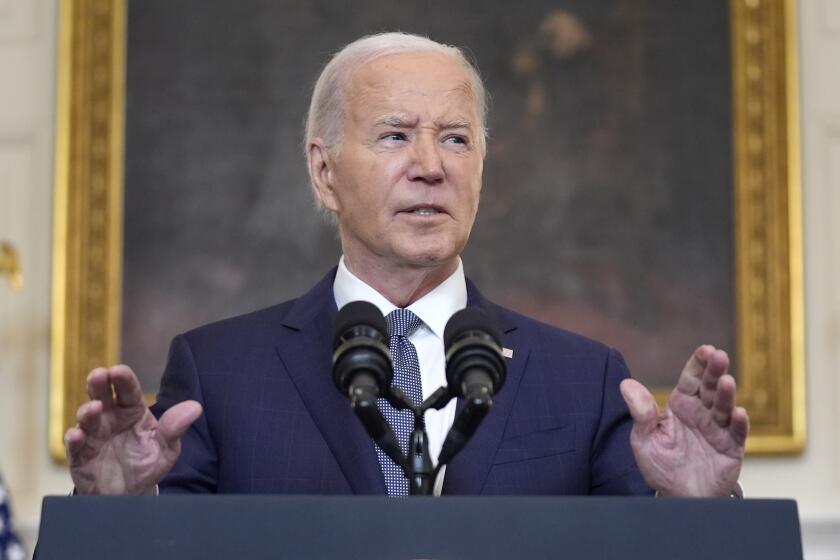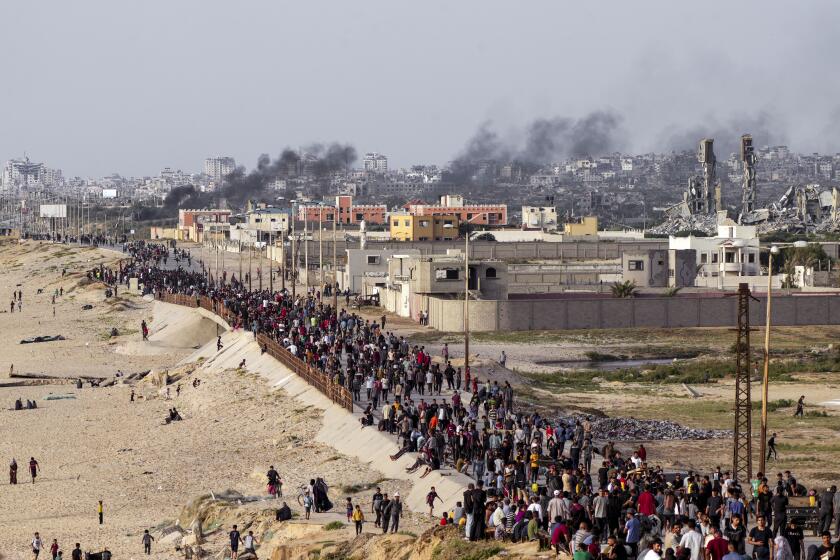Israel bombs another U.N.-run school in Gaza, a day after strike on school killed 33

- Share via
Israel’s military has bombed another United Nations-run school in northern Gaza, and three people were killed, Palestinian emergency officials say. Israel said it was striking a Hamas position inside the school.
Friday’s bombing came a day after an Israeli attack on a U.N. school in central Gaza killed at least 33, including 12 women and children, according to local health officials. The Israeli military said in that case too that Hamas militants were operating from within the school, which the U.N. said was sheltering displaced Palestinian families.
Friday’s airstrike targeted the Asmaa School in the Shati refugee camp in northern Gaza, a facility run by the U.N. agency that cares for Palestinian refugees, known as UNRWA.
The Israeli military said it struck a shipping container on the grounds of the school that Hamas was using as a meeting point to plan attacks. It said one militant was killed. Israel’s claims could not be independently confirmed.
It was the latest instance of mass casualties among Palestinians trying to find refuge as Israel expands its offensive.
The Palestinian Civil Defense said three people were killed in the strike, without giving details on their identities.
More than 180 U.N. facilities have been damaged during Israel’s campaign of bombardment and ground attacks across the Gaza Strip, according to UNRWA. Most were schools, which have been serving as shelters for tens of thousands of people fleeing the violence. Israel accuses Hamas of using schools and other civilian infrastructure to position its fighters, weapons and command posts.
As the war completed its eighth month Friday, Gaza’s Health Ministry said Israel’s campaign has killed more than 36,730 people. Its count does not differentiate between civilians and combatants, though it includes thousands of women and children.
Both Israel and Hamas are coming up with objections to a U.S. plan to end the Israel-Hamas war, which would see a cease-fire and a surge in aid for Palestinians.
The Israeli army says it follows international law and blames civilian deaths on Hamas, saying militants operate among the population. The Geneva Convention says civilians must not be targeted deliberately or indiscriminately, and military operations must be proportionate.
Israel’s military said Friday that it had identified an additional eight militants among those killed in Thursday’s strike on the U.N.-run school in central Gaza. This raised the total number of alleged militants killed in the strike to 17. The day before, Israel said nine had been militants. Israel released the names of those it said were militants, but the Associated Press could not verify the claim. Israel said Thursday that some 30 militants were in the school.
Most postwar plans floated by diplomats and world leaders seem doomed to fail. Here’s a look at the leading ideas for what to do with the Gaza Strip.
Philippe Lazzarini, head of the UNRWA, said some 6,000 people were sheltering in the school when it was hit.
International pressure is mounting on Israel to limit civilian bloodshed in its war against Hamas. The top U.N. court has concluded there is a “plausible risk of genocide” in Gaza — a charge Israel strongly denies.
Israel launched the war after Hamas’ Oct. 7 attack, in which militants stormed into southern Israel, killed some 1,200 people — mostly civilians — and abducted about 250. As many as 100 hostages captured Oct. 7 are believed to be alive in Gaza, alongside the remains more than 30.
The Israel-Hamas war has largely cut off the flow of food, medicine and other supplies to Palestinians who are facing widespread hunger. U.N. agencies say more than 1 million in Gaza could experience the highest level of starvation by mid-July.
More to Read
Sign up for Essential California
The most important California stories and recommendations in your inbox every morning.
You may occasionally receive promotional content from the Los Angeles Times.













